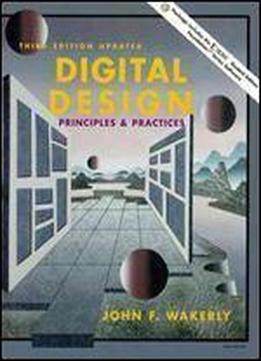
Digital Design: Principles And Practices (3rd Edition)
by John F. Wakerly /
2000 / English / PDF
8.7 MB Download
I'm in my early 60's and I'm now back in school studying electronics engineering. This book was used in one of my first back to college classes in 38 years. I don't remember much math, but was able to understand the concepts in this book. Yes it's hard and condensed. I would like to see an idiot's version of Boolean Algebra that holds your hand more, but this book and my Professor got me through. Thanks Dr. Luca! For the first time in my life I now have a basic understanding of how a microprocessor and other digital logic electronic circuits work. Out of what I learned in this text, concepts were put into a patent application filed this summer. This invention would not have been as profound without having studied from this book. All from 1 semester of studying electronics engineering. I have much to learn, including computer programming as used in this book, such as the HDL languages. This book includes 3 versions of HDL's: ABEL, VHDL, and Verilog. You can pick and choose. We used VHDL in my class. For electronics engineering students with math and programming experience, this book should be great. When I first went to college, everyone used slide rules! There were no personal computers. You learned Fortran on a main frame and hoped you did not make a mistake and have a tractor drive printer turn your $50.00 box of perf paper into nonsense within a few minutes. $50.00 was a lot of money to a poor student then. The minimum wage was $1.25! But I learned a lot as a beginner with this book. Cool jokes in the book. Had fun in digital and even designed a vacuum tube into a digital circuit. I had to explain what a tube is to the lab instructor. Several professors thought that was cool. A senior professor, head of graduate electronics engineering, really lit up when I told him about the tube. He said, when I was a graduate student, the faculty built a digital computer using tubes and I got to program it! Had a great time! For those interested, the tube was a directly heated, subminiature pentode with a filament voltage of 1.25 and a plate voltage of 15 volts. It was stuck into a clock line just for a reason to be there. The circuit would quit without the tube. Fun!! For fun, it would be neat to find out if John Wakerly knows what a tube is!











